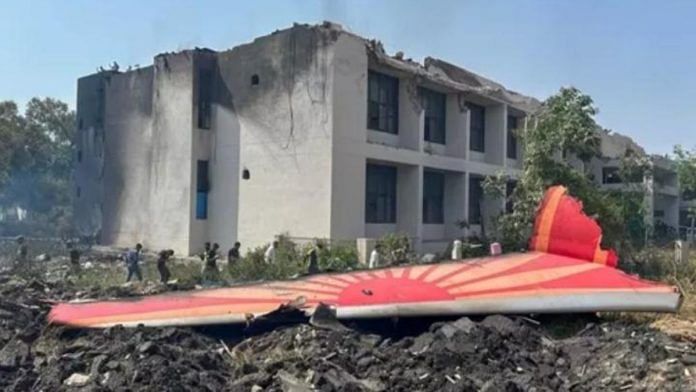The Air Accidents Investigation Board’s preliminary report into the Air India 171 crash has generated more questions than answers, and its share of controversy. Popular reaction suggests it has failed the public trust test. In any democracy, all governments and their agencies face a dilemma between secrecy and transparency in decision-making. By instinct, most systems of government around the world tend to lean toward secrecy. That’s not always due to some evil design or malicious intent. It is often because officials prefer less scrutiny and less noise while deliberating on what are complex decisions. But this tendency doesn’t always serve the public well.
Needless to say, there must be a balance between secrecy and transparency in government. Some subjects demand absolute confidentiality — matters of war, intelligence, internal security, or information akin to corporate insider data, that is, prior knowledge of decisions that could bring pecuniary gain to certain individuals or entities. Government procurement, disinvestment plans (especially those involving listed PSUs), among others, fall into this category. It would be safe to say that defence, finance, and home are three domains where secrecy does matter.
On the other hand, the making of policies by most other ministries need not happen in secrecy. Indeed, most policies are usually made after consulting stakeholders. Legislation is passed after debate in Parliament and scrutiny by the media and on social media. The government with a majority must, in the end, have its way. But most policies get enough sunlight, and many get a dose of democracy’s necessity to build “consensus”. On the downside, many necessary but seemingly “tough” policies get diluted (think GST). But the absence of extensive consultations can kill good policy. The farm laws are a perfect example.
So where is the dilemma? It lies in setting the fundamental culture of government. Which end of the spectrum do you lean toward, and are you flexible enough to shift when needed? In India’s recent history, the second term of the UPA government was infamous for the alleged scams. It was equally infamous for multiple daily leaks (published in the media) from different parts of the government, often at cross purposes.
That kind of “transparency,” where every government file and every noting by a bureaucrat is exposed to the public domain, can be highly damaging. It makes the entire system averse to making any decision at all. The reason there was the so-called policy paralysis in the second term of the UPA, which brought great harm to the economy, was that the business of the government was being carried out far too publicly. Of course, the motivation wasn’t the public interest; it was conflicting interests within the ruling dispensation.
Also read: Air India crash should push India to create independent board for transport safety oversight
Secrecy important, but not always
That said, having watched the havoc of the 2011-2014 period, the Narendra Modi government swung the pendulum toward confidentiality and secrecy. To the government’s credit, this has gone hand-in-hand with increased transparency in many areas. Consider how natural resources are now allocated only through auctions, or how all government procurement happens online through the GeM portal. Indeed, the Prime Minister and his office have run a tight ship over the last eleven years, with hardly any leaks or disclosures of sensitive — or even substantive — information. But at some point, this can become self-defeating.
The AAIB report is a good example. International convention requires that a preliminary report be published within 30 days. After a tragedy of this magnitude, which has captured and disturbed public consciousness, being more transparent, not less, is important. However, there was very little, if any, information provided by the AAIB in the 30 days following the crash. For some reason, the report was released precisely on the 30th day, in the late hours of the night or early morning. And when it came out, it provided less than full information about matters that the AAIB clearly has access to, like the full cockpit voice recordings. All of this has diminished public trust, because it gives the impression that something is being hidden.
There may not be anything to hide. The AAIB is simply following the modus operandi of the Modi government: not communicating with the public in the first 30 days because that would be considered “leaking”; releasing press notes in the middle of the night, even for matters with little public consequence; and not providing full information at the first instance, as part of the culture of confidentiality built over the last eleven years.
The AAIB may not have received any instructions to act this way, but the prevailing culture of officialdom matters. In this case, it would have been useful for the government to instruct, or at least suggest, that the AAIB be more transparent and forthcoming than required. Public trust in the institutions of government should not be eroded because of an unnecessary need to be secretive about everything, all the time. Sharing information can also lead to positive outcomes.
The author is Chief Economist, Vedanta. His X handle is @nayyardhiraj. Views are personal.
(Edited by Prashant)







Each Indian family, middle class and above, is a stakeholder in the safety of civil aviation. Have not read a single piece that praises the interim report.